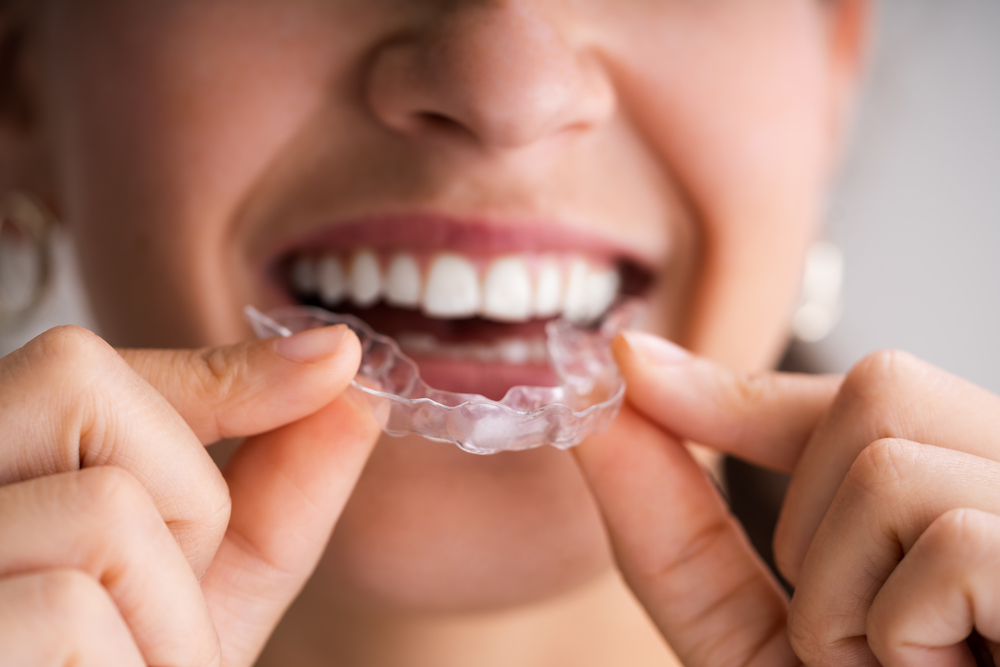It’s an exciting time for orthodontics. Today, patients who want straighter teeth can choose from traditional metal braces, clear brackets with metal wires, lingual braces (behind teeth), cosmetic procedures like veneers, or Invisalign® clear, removable aligners. Not all of these options are suited to every patient, but oftentimes patients have two or more options.
Pros and Cons of Invisalign and Traditional Braces
Age Range
Traditional braces are suited for children as young as 6 years old and there’s no upper age limit.
Invisalign now has treatment options for children as young as 6 years old, and there’s no upper age limit. The early orthodontic treatment for children is called Invisalign First. There’s also Invisalign Teen and traditional Invisalign.
Precision Tooth Movements
Traditional braces feature brackets on each tooth, so precise movement can be achieved.
Invisalign uses clear aligners, so very fine, particular movements may not be accomplished.
Types of Cases
Traditional braces can straighten widely spaced, crowded, or twisted teeth, as well as those that require vertical movement.
Invisalign can straighten widely spaced or crowded teeth. It cannot move twisted teeth or prompt vertical movement.
Treatment Time
Traditional braces usually take about two years to complete a treatment plan.
Invisalign takes between six and 18 months for treatment, depending upon case complexity and patient compliance.
Flexibility
Traditional braces are glued to teeth. They cannot be removed by the patient.
Invisalign treatment consists of a series of clear, removable aligners. Patients must wear each aligner for 22 hours a day, over about two weeks before moving to the next.
Appearance
Traditional braces feature metal brackets and wires, though modern brackets are smaller and more discreet than those of previous generations. Also, patients can choose white ceramic brackets and nickel wires in some cases, which make the braces less obvious.
Because Invisalign aligners are made of clear acrylic, they’re practically undetectable. Also, patients can remove their aligners for special occasions, such as when having a photo taken or speaking in public.
Appointments
At six-week appointments, braces patients will undergo tightening procedures. The wire that threads through the brackets is adjusted and tightened to facilitate continued, guided teeth movement. These adjustment appointments can leave a patient with a sore mouth for about 48 hours.
Invisalign check-in visits consist of Dr. Brown evaluating teeth to ensure they’re moving as predicted and are on track with the treatment conclusion date.
Both braces and Invisalign patients need to visit their general dentist every six months for a cleaning and checkup.
Dietary Restrictions
Patients with traditional braces should avoid sticky, tough, and chewy foods that can cause braces components to break, bend, or dislodge. Popcorn is off the approved foods list, as well, because kernels can lodge under brackets and cause problems.
Invisalign patients simply need to remove their aligners when eating. No food is prohibited.
Teeth Staining
After traditional braces are removed at the completion of treatment, some patients have serious tooth stains around where brackets were placed. In some cases, enamel incurs damage, as well. All of these issues are treatable.
Because Invisalign has no brackets and can be removed for total-coverage brushing, staining isn’t an issue, nor is enamel damage.
Daily Care
After every meal, traditional braces patients should brush and floss. Interdental brushes help make daily oral care easier than when using a traditional toothbrush. Rinsing the mouth with water also helps keep bacteria at bay, which reduces the risk of gum disease and cavities.
Remove Invisalign aligners before eating meals or snacks. Brush your teeth in the morning and evening, and floss before evening brushing. Also, rinse your aligner with gentle soap and water at each brushing session.
Aftercare
When a patient completes orthodontic treatment with braces or Invisalign, he must wear a retainer 24 hours a day for as long as the dentist prescribes. Then the retainer should be worn indefinitely overnight.
Patients can opt for a permanently affixed retainer that sits behind the teeth if compliance may become an issue. Orthodontic patients who do not wear a retainer after treatment may experience relapse, which means teeth shift out of alignment.
Call for Your Invisalign Consultation Today
To learn more about Invisalign clear, removable aligners, call our dental office in Naperville today at 630-369-3120. We will reserve your consultation with Dr. Brown, allowing sufficient time for him to examine your mouth and share his findings. He’ll also answer all of your questions and address your concerns. We look forward to serving you!

